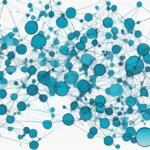Table of Contents
Welcome to our comprehensive guide on understanding information. In this article, we will explore the various facets of information, including its definition, formats, purposes, and significance. Whether you’re a student conducting research, a professional seeking valuable insights, or simply curious about the nature of information, this guide has got you covered.
Information can be found everywhere, whether in books, online resources, or media outlets. But what exactly is information? At its core, information is stimuli that hold meaning in a specific context for its intended receiver. It can take various forms, such as written text, images, audio, or even data.
Understanding the different formats of information is crucial in today’s digital age. From news articles and scholarly journals to social media posts and magazines, information is disseminated through numerous channels. Each format serves different purposes and comes with varying degrees of credibility and reliability.
As we delve deeper into this guide, we will discuss the significance of information literacy and its role in developing critical thinking skills. We will also explore the process of identifying information needs, the importance of time management in conducting research, and the proficiencies required to become information literate.
So whether you’re a student, professional, or enthusiast, join us on this informative journey as we unravel the complexities of information and equip you with the necessary tools to navigate the ever-expanding sea of knowledge.
What Is Information and Data?
Information and data are fundamental concepts in today’s digital age. Understanding the distinction between the two is crucial for individuals seeking to navigate and make sense of the vast amount of content available.
Information can be defined as stimuli that holds significance or meaning in a particular context for its receiver. It is the result of processing data, enabling individuals to understand, interpret, and derive knowledge from it.
Data, on the other hand, refers to raw, unprocessed information that can be collected, stored, and manipulated. It exists in various forms, including text, numbers, images, and audio.
When it comes to data, there are two main types: quantitative and qualitative. Quantitative data is expressed mathematically and can be measured objectively. Examples include numerical values, statistics, or any data that can be counted or measured. Qualitative data, on the other hand, is subjective and derived from observations, interviews, or open-ended survey responses. It includes data in the form of text, audio recordings, or images.
The collection and processing of data follow a cycle known as the data processing cycle. This cycle involves several stages:
- Collection: Data is gathered from various sources, such as surveys, sensors, or databases.
- Sorting and organizing: The collected data is sorted and organized according to relevant categories or criteria, making it easier to manage and analyze.
- Transformation: Data is transformed into a format that can be easily understood and utilized by users. This may involve formatting, cleaning, or structuring the data.
- Storage and retrieval: Processed data is stored in databases or other storage systems for future access or analysis.
It’s important to note that data itself does not hold inherent meaning. The conversion of data into information involves processing and organizing it to provide context and value.
Information, in turn, can be further processed and analyzed to derive knowledge. Analysis and interpretation of information contribute to gaining insights and understanding patterns, relationships, and trends.
Ultimately, the acquired wisdom comes into play when individuals apply judgment and take action based on the interpreted information. By understanding the fundamental concepts of information and data, individuals can harness the power of data-driven decision-making in various fields and industries.
Evaluating and Analyzing Information
Evaluating and analyzing information is crucial to ensure its reliability and relevance. In today’s digital age, where information is abundantly available, it is essential to develop critical thinking skills to distinguish trustworthy sources from misleading ones.
Social media platforms can provide valuable insights, but they often lack the necessary reliability and fact-checking. Therefore, it is important to verify information found on social media through credible sources.
When evaluating information sources, it is important to consider various criteria such as quality, accuracy, relevance, bias, reputation, and credibility. News articles, for example, can be useful primary sources for current events, while magazine articles may delve deeper into the reasons behind these events with thorough editorial processes.
For academic research, scholarly articles are highly regarded. Written by experts in their respective fields, these articles undergo a rigorous peer-review process, ensuring their high quality and reliability. Students can save time and access evaluated resources by utilizing academic libraries.
Ultimately, honing the skills of evaluating and analyzing information equips individuals with the ability to make evidence-based decisions and draw informed conclusions. Developing these critical thinking abilities is invaluable in today’s information-driven society.
FAQ
What is information?
Information is stimuli that has meaning in a certain context for its receiver.
What is data?
Data refers to raw information, which can be collected, stored, and manipulated in digital form.
What are the different types of data?
Different types of quantitative data include discreet, continuous, nominal, ordinal, and discrete data.
What is the data processing cycle?
The data processing cycle involves collecting data from multiple sources, sorting and organizing it, and transforming it into a format that users can understand and use.
How is data transformed into information?
Converting data to information involves processing and organizing it to give it meaning and value.
How is information converted into knowledge?
Information is then converted to knowledge by analyzing and interpreting it, and wisdom is gained by applying judgment and action to the information.
Why is evaluating and analyzing information important?
Evaluating and analyzing information is important to ensure its reliability and relevance.
What are different types of information sources?
Different types of information sources include social media, news articles, magazine articles, and scholarly articles.
How can I evaluate the reliability of a source?
When evaluating sources, consider their quality, accuracy, relevance, bias, reputation, and credibility.
What makes scholarly articles a reliable source?
Scholarly articles are written by experts and undergo a peer-review process, making them high-quality sources for academic research.
Why is it important to critically appraise and evaluate findings?
It is important to use information from reliable sources and to critically appraise and evaluate findings.
How can students save time in their research?
Students can save time by using academic libraries, which provide access to evaluated resources.
Why are knowledge and skills in evaluating and analyzing information important?
Knowledge and skills in evaluating and analyzing information are important for making evidence-based decisions and conclusions.







